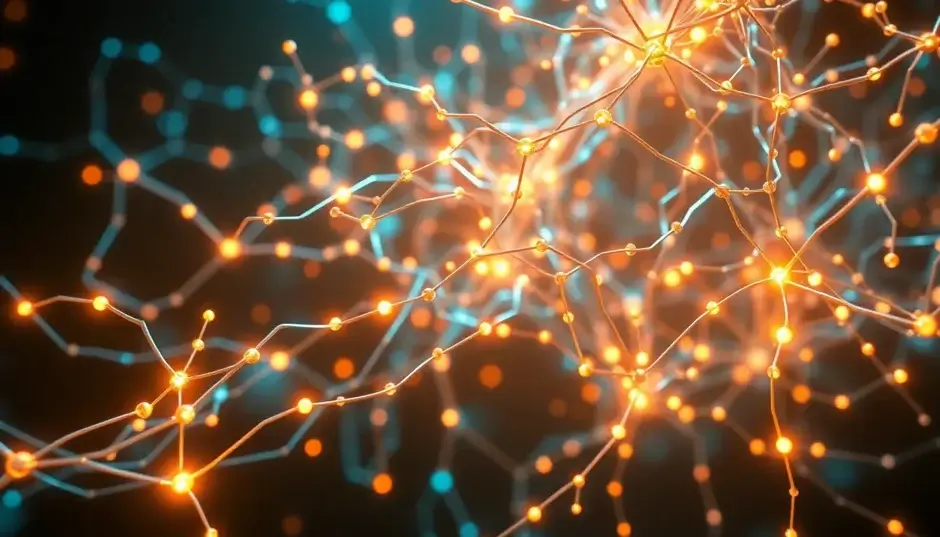TL;DR: Tencent has unveiled Hunyuan Image 3.0, setting a new benchmark for open-source image generation models with its massive 80-billion-parameter Mixture-of-Experts (MoE) architecture, which leverages a unified hunyuanimage 3.0 autoregressive framework to achieve performance comparable to or surpassing leading closed-source competitors.
In the rapidly evolving landscape of artificial intelligence, image generation capability stands as a critical frontier. The recent announcement and subsequent open-sourcing of Hunyuan Image 3.0 from the Tencent Hunyuan Foundation Model Team mark a significant milestone in this domain. This iteration represents a substantial leap forward, built upon the foundation laid by previous models like Hunyuan Image 2.1, pushing the boundaries of what generative AI can achieve in terms of quality, fidelity, and technical complexity.
Table of Contents
The Architectural Leap: Native Multimodal Model
What truly sets Hunyuan Image 3.0 apart is its novel underlying design. Moving beyond the prevalent Diffusion Transformer (DiT) architectures, hunyuanimage 3.0 embraces a Unified Multimodal Architecture built upon an autoregressive framework. This approach allows for a more integrated and direct modeling of both visual and textual modalities within a single sequence, facilitating richer context understanding and generation.
The Powerhouse Backbone: MoE Implementation
The sheer scale and efficiency of the new model are noteworthy. Hunyuan Image 3.0 is, by release metrics, the largest open-source image generation Mixture of Experts (MoE) model available. It boasts a total of 80 billion parameters, yet maintains computational efficiency during inference by activating only 13 billion parameters per token. This massive capacity, stemming from its foundation on the Hunyuan-A13B LLM, allows for handling complex semantic relationships and deep world knowledge reasoning.
Key technical components driving this include:
- Dual-Encoder Strategy: The architecture cleverly integrates latent features from a VAE (with 16x downsampling for simplicity and quality) and a vision encoder. This dual input allows the model to seamlessly manage interleaved text, dialogue, and image-editing instructions within a continuous context, eliminating the need to switch between separate understanding and generation pipelines.
- Generalized Causal Attention: A custom attention mechanism ensures that text generation respects causality (attending only to previous tokens) while image token processing benefits from the global contextual awareness of full attention.
- Vision Encoding Sophistication: The use of a 16x downsampling VAE, as opposed to the more common 8x VAE plus patchification layer, simplifies the pathway while upholding hunyuanimage 3.0’s commitment to superior image quality.
Superior Performance and Creative Fidelity
Performance is where Hunyuan Image 3.0 aims to shine, directly challenging established proprietary models in arenas like the Arena benchmark, where it has been reported to outperform competitors like Nano Banana and Seedream 4.0.
Enhanced Quality and Prompt Adherence
Creators utilizing the Hunyuan Image 3.0 framework have reported significant advantages in the final output quality. The model excels due to rigorous dataset curation and advanced Reinforcement Learning from Human Feedback (RLHF) post-training, resulting in what users describe as stunning, photorealistic imagery with exceptional detail and structural coherence. One user specifically noted its “incredible mastery of eastern aesthetics,” rendering cultural elements like the Chinese zodiac and shadow puppetry with high fidelity.
Crucially, the model demonstrates powerful Intelligent World-Knowledge Reasoning. It can interpret sparse prompts and autonomously elaborate on them with contextually appropriate details, leading to more complete and richer visualizations.
Multilingual and Aspect Ratio Flexibility
Breaking barriers for global creators, hunyuan image 3.0 offers native support for both Chinese and English prompts. Furthermore, it supports a flexible range of aspect ratios (1:1, 16:9, 9:16, 4:3, 3:4, 3:2, 2:3), making it adaptable for diverse platform requirements, from social media graphics to professional print layouts.
Leveraging Advanced Prompting with HunyuanImage 3.0
Achieving the best results with hunyuanimage 3.0 often involves detailed prompting, though the accompanying Instruct Checkpoint assists with complex interpretations.
The official prompt guidance suggests a structured approach for maximizing output quality:
- Main subject and scene (The core concept).
- Image quality and style (e.g., photorealistic, cinematic).
- Composition and perspective.
- Lighting and atmosphere.
- Technical parameters.
For users needing an extra boost or dealing with very brief inputs, the PromptEnhancer module, leveraging external LLMs like DeepSeek, can automatically rewrite and optimize prompts for better alignment with the Hunyuan Image 3.0 generative capabilities. This feature is particularly beneficial for refining text-rendering prompts.
Community Adoption and Availability
The excitement around Hunyuan Image 3.0 is palpable within the developer community. Having been released as open-source, it allows researchers and commercial entities alike to integrate this state-of-the-art foundation model into their workflows.
Testimonials from early adopters highlight tangible benefits:
- Increased Productivity: Digital artists report saving over 20 hours weekly just by upgrading to Hunyuan Image 3.0 for superior, consistent results.
- Rapid Deployment: Marketing teams utilize the model for quick, on-brand visual asset generation, drastically cutting campaign launch times from weeks to days.
- Creative Exploration: Designers can iterate through dozens of high-quality concepts daily, something previously bottlenecked by traditional production costs.

The community is actively engaging with this technology, sharing diverse creations that test the model’s boundaries, from complex urban scenes to finely textured historical aesthetics.
Getting Started with HunyuanImage 3.0
For those looking to experiment, Hunyuan Image 3.0 is accessible via several platforms, including hosted demos and local installation methods.
System Requirements and Local Setup
Deploying hunyuanimage 3.0 locally requires robust hardware, emphasizing its scale:
- OS: Linux
- GPU: NVIDIA with CUDA support
- Disk Space: Approximately 170GB for model weights.
- VRAM: Recommended minimum of 3x 80GB GPUs for optimal performance on the base model.
The software dependencies lean heavily on modern PyTorch (version 2.7.1 with CUDA 12.8 is tested) and often benefit from optimization libraries like FlashAttention and FlashInfer for achieving faster inference speeds (up to 3x improvements).
For developers streamlining their pipeline, the open-source repository provides inference code and scripts for launching interactive Gradio demos, making the capabilities of Hunyuan Image 3.0 readily testable.
Image-to-Image Capabilities
Beyond pure text-to-image synthesis, the Hunyuan Image 3.0 framework also supports powerful image-to-image transformation. Users can upload source images (supporting JPG, PNG, GIF, WebP) and apply transformation prompts to edit or enhance existing visuals with the model’s advanced understanding.
The Future of AI Imaging with Hunyuan Image 3.0
Hunyuan Image 3.0 represents more than just an iterative upgrade; it signifies a directional shift towards more capable, context-aware, and open-source large-scale generative models. Its native multimodal design, combined with massive scale and performance optimizations, positions it as a serious contender in the rapidly advancing field of AI visual creation. Whether you’re a professional designer or a hobbyist, exploring the hunyuan image 3.0 ecosystem promises access to truly breakthrough visual results.
Images sourced from Hunyuan Image 3.0 community showcases and technical documentation.
 TOOL HUNTER
TOOL HUNTER


